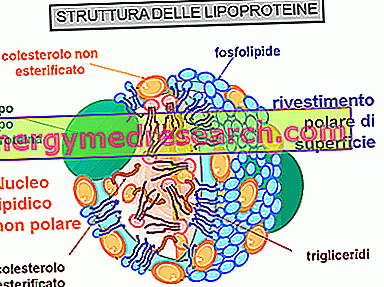Generality
Abdominal paracentesis is a medical-surgical procedure indicated for the collection and / or evacuation of the fluid accumulated in the peritoneal cavity, due to certain pathological conditions.

This method can be performed both for diagnostic purposes, ie to analyze the fluid sample collected from the abdomen, and for therapeutic reasons . Paracentesis is applied, in particular, to cases of ascites and allows to reduce the determined pressure on the other organs from the excess liquid, which, for example, can hinder breathing or cause pain.
The procedure is performed with the patient lying on his back or on his side and is conducted by introducing, under ultrasound guidance, a thin cannula needle into the peritoneal cavity. Sometimes, for a few days, a small tube may be left in place that continues to drain the liquid from the abdomen.
Did you know that…
A procedure similar to paracentesis is thoracentesis . In the latter case, however, the liquid is extracted from the pleural cavity, ie the thin space between the chest wall and the lungs.
What's this
Paracentesis (also called peritoneocentesis ) is a procedure that involves puncturing the abdomen for removal of ascitic fluid. This procedure is carried out with the patient lying on his back or on his side, by introducing a thin needle, usually under ultrasound guidance.
What is the peritoneal cavity?
The peritoneal cavity is the "container" of the abdominal organs ; this space is enclosed by a thin membrane, called peritoneum . Normally, only a thin layer of liquid is found here. The accumulation of the latter in an excessive quantity ( ascites ) can derive from a pathology affecting the abdominal organs (the liquid filters, that is, from the viscera of the abdomen involved in an illness) or from the modifications of the pressure of the same fluid.
The liquid taken with the paracentesis is then sent to the analysis laboratory to establish the exact cause of the pathological accumulation .
Ascites may depend on a tumor or other diseases, such as liver cirrhosis, infections or heart disease.
Paracentesis can also be performed to relieve excessive pressure exerted by the excess fluid and thus reduce abdominal tension . Sometimes, in the days following the surgery, a thin tube may be left in place that continues to drain the fluid.
Why do you run
Paracentesis is the insertion of a needle to remove the fluid from the abdomen, in order to subject it to cytological, microbiological and biochemical analysis . These tests allow to evaluate the characteristics of the extracted liquid (protein concentration, red blood cell count, white blood cell count, etc.). The procedure can also be implemented for the drainage of the ascitic fluid to the outside, allowing the volume to be reduced.

The main purposes of the paracentesis are:
- Diagnostics : the procedure allows the collection for the analysis of the liquid pouring, in order to understand its nature (eg portal hypertension, metastatic cancer, abdominal infections etc.). Moreover, the paracentesis allows to ascertain the presence or not of blood in the peritoneal cavity, following a closed abdomen trauma, and to find a peritonitis.
- Therapeutics : paracentesis can be performed to reduce the determined pressure on the other tissues from the excess fluid, which can alter the functioning of some organs or cause pain. The intervention is also able to provide temporary relief for discomfort caused by ascites (eg breathing difficulties, oliguria, etc.).
How to do it
Before paracentesis
Paracentesis is performed after local administration of a small dose of anesthetic (usually 1% lidocaine or ethyl chloride).
The procedure is performed on the patient sitting or lying on the left side, to allow the liquid to be placed in greater quantity on the side to be punctured. The area of choice for paracentesis is the lower left abdominal quadrant .
Subsequently, the doctor performs an adequate disinfection of the area in which to insert the needle, with an antiseptic solution .
During the entire duration of the paracentesis, the patient must remain immobile, unless otherwise indicated by the health personnel.
Execution methods
Paracentesis involves the use of a cannula needle, of various sizes, mounted on a syringe and equipped with a plastic tube inside it; this device is introduced with a certain decision, through the skin, fat and muscles of the abdominal wall, until it reaches the area of ascitic collection . In general, this operation is performed with an ultrasound support, keeping the needle perpendicular to the skin plane. The needle is then removed, leaving the plastic catheter in place, which is connected to another tube that leads to a drainage bag .

After paracentesis
At the end of the paracentesis, after removal of the needle and / or drainage catheter, the area is covered with a sterile compressive gauze.
In the event of removal of ascites of more than 500 ml, human albumin is administered intravenously, to prevent hypotension (low blood pressure).
After the withdrawal of the liquid from the peritoneal cavity, the latter is sent to the analysis laboratory, where it is subjected to culture, cytological and biochemical tests. The purpose of these investigations is to understand the cause that led to this accumulation, which may depend on a tumor or other diseases (such as cirrhosis).
How long does it last?
Indicatively, paracentesis is performed in 20-30 minutes. After the procedure, the patient is kept under observation for about 2-3 hours.
Preparation
- Before the paracentesis, the physical examination is performed, sometimes accompanied by an ultrasound, to confirm the presence of excess fluids in the abdominal cavity.
- In the days before the paracentesis exam, your doctor may ask you to stop treatment with anticoagulant or antiplatelet drugs. Furthermore, when planning the procedure, it is good to report the presence of allergies.
- If there is the possibility that a pregnancy is in progress, the doctor will evaluate the possibility of postponing the examination (after the necessary investigations, ie with the confirmation of the actual conception) or can opt for another diagnostic investigation.
Contraindications and Risks
Paracentesis can be contraindicated or be difficult to perform in people who present:
- Blood clotting disorders;
- Adherences due to previous operations on the abdomen or surgical scars in the area to be punctured;
- Severe obesity;
- Pregnancy;
- Severe portal hypertension.
Furthermore, the procedure is not recommended in case of poor patient collaboration.
Paracentesis must never be performed in case of intestinal obstruction and abdominal wall infection.
Complications
Paracentesis is a safe but invasive procedure. For this reason, complications may occur, albeit in rare cases.
In paracentesis, the chances of the needle accidentally pricking the bladder, bowel or blood vessel are very low; this risk can be minimized by using ultrasound guidance. This occurrence would require a short stay.
After the procedure, the risk, although very rare, of hemorrhagic or infectious complications cannot be excluded. If fever, pain, or blood in the urine or drainage fluid appears in the days following the exam, contact your doctor immediately.
Paracentesis: is it painful?
A local anesthetic is performed before introducing the needle for paracentesis. Therefore, the patient generally feels only a slight pain or a sense of pressure at the time of penetration of the needle and aspiration of the liquid.
In some cases, transient disturbances, such as abundant sweating, nausea and fainting may occur during paracentesis.
When large amounts of fluid are removed from the abdomen, you may feel a slight dizziness: in this case, to avoid pressure drops, the doctor may decide to administer other fluids, via an IV.
Risks related to paracentesis
The risks associated with paracentesis are minimal, but it is still an invasive exam.
If the needle is not inserted correctly, the following may occur:
- Perforation of the digestive tract;
- Pouring of fluid through the hole made by the needle;
- Bleeding.
Perforation of the intestinal wall during paracentesis requires surgery to remedy it. An increased risk of this occurrence occurs mainly in patients with abdominal adhesions.
Interpretation of Results
The accumulation of fluid in the abdominal cavity is always abnormal. Paracentesis can be used for diagnosis, to obtain a sample of peritoneal fluid to be examined, or as part of the treatment, with the aim of eliminating an excess of ascitic fluid.
Paracentesis is useful in the diagnosis of various diseases.
These include:
- Liver diseases (eg liver cirrhosis, alcoholic hepatitis, portal vein thrombosis, etc.);
- Spontaneous bacterial peritonitis and other infections (eg abdominal tuberculosis);
- Inflammations of various origins (eg pancreas, biliary system);
- Peritoneum or metastatic cancer tumors;
- Kidney diseases;
- Heart failure.
The ascitic fluid can be exudate (inflammatory edema) or transudate (non-inflammatory edema). The finding of a high protein content in the fluid taken with the paracentesis indicates that the ascites was formed following an inflammatory process, the causes of which need to be investigated. In the presence of abdominal infections, such as bacterial peritonitis, the white blood cell count in ascitic fluid is typically high.



